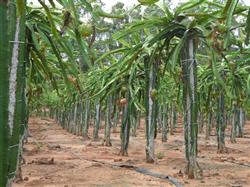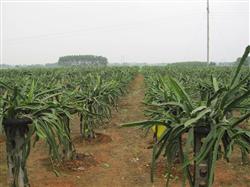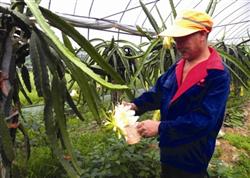Which diseases and insect pests need to be controlled in planting dragon fruit?

Which diseases and insect pests need to be controlled in planting dragon fruit? Please give instructions on planting fire dragon to control diseases and insect pests. Please refer to the following methods: (1) as the dragon fruit is a wild plant and has not been domesticated for a long time, there are no specific diseases and insect pests. No deadly insect pests have been found so far. As for diseases, they will be infected with germs or viruses as a result of weakening resistance after transplantation or trauma, but no local or full-scale infectious diseases have been found. In terms of pests, the buds will be eaten by pests during the branch growth period, but because the buds of the plants grow more in a very short period of time and grow rapidly (more than 2 cm per day), the buds eaten by pests are very limited and will not affect the growth of branches. (2) several common pest control methods are introduced as follows: the growth stage of dragon fruit seedlings and branches is the stage of branch growth, nutrition accumulation and nutrient storage for flowering and fruit. at this time, the outer skin of the branch is thin, tender and succulent, molluscs such as snails and slugs are easy to cause harm, and eating tender branches is disadvantageous to the growth of dragon fruit branches. Therefore, snails, slugs and other molluscs should be prevented at this time, and the method of prevention and control is to sprinkle lime, ashes or bait at the head of the tree. During the seedling growth period, caterpillars like to eat twigs, especially buds. If the growing point is eaten at this time, the plant will stop growing. The control method can sow pakchoi seeds on the ground and induce butterflies to lay eggs on pakchoi to avoid damage to the tender buds of dragon fruit. If the caterpillar occurs seriously, it can be killed with insecticides. Generally, about 3 cm is extracted from flower buds and shoots to start spraying, with 90% trichlorfon or 80% dichlorvos plus 40% dimethoate 1000 times, 20% fenpropathrin or 2.5% deltamethrin 2000,3000 times, 50% Daofeng Powder 1000 times. Once every 10 days, sprayed 2 times in a row. In addition, when the dragon fruit peel turns red and the fruit is ripe, the fruit fly will lay eggs in the mature fruit epidermis, and after hatching, the larvae feed on the flesh, resulting in split fruit, rotten fruit, intact surface of the damaged fruit, wormholes and juice flow out of the hand press. The pulp has rotted, and there are many maggots. The control method is to turn the garden soil in winter or early spring to reduce the population number in winter; in the peak period of insects, spray the crown with 2000 times of pyrethroid pesticides or 90% trichlorfon and 3% brown sugar at night, once every 7 days, three times in a row. Bagasse fiber cubes (57 mm × 57 mm × 10 mm) soaked in 97% methyl eugenol and 3% dibromophosphorus solution (in the proportion of 95:5) can also be suspended from the tree, 50 yuan per square meter, twice a month, to trap and kill male adults. The fruit can be bagged in the middle stage of fruit development to prevent adults from spawning. Click to get more dragon fruit planting techniques click to get more fruit planting techniques
- Prev

How to manage dragon fruit after planting?
How to manage dragon fruit after planting? Please introduce the management method that begins to blossom and bear fruit about 12 Mel 14 months after planting. It can blossom 15 times a year. April to November is the fruiting period. The fruit can be harvested 40 days after Xie Hua. The weight of a single fruit is generally 500 Mel 1000 grams. There are more than 20 fruits per column in the second year after planting.
- Next

How to prune and pollinate red meat dragon fruit?
How to prune and pollinate red meat dragon fruit? Please introduce the red meat dragon fruit pruning is to achieve the balance between stem and side vines, so that the dragon fruit has reasonable light in a reasonable space, the pruning operation is mainly to pick the heart and cut the new buds which are unreasonable and too dense, through the top to pick the heart, restrain.
Related
- Moge, come on! The staff of the peasant association in the producing area of cantaloupe were frightened when the crowd gathered.
- Causes and Solutions of low Fruit setting rate of Apple
- Symptoms and control measures of passion fruit virus disease
- Fruit growing lesson: how do apple orchards keep high yields?
- Can you build orchards in the mountains? What are the pros and cons?
- How to manage the coloring period of Crisson grape?
- This paper introduces the processing technology of two kinds of fig products.
- How much is a month for retired teachers in rural areas by 2020?
- How can strawberry planting increase sugar content? We should pay attention to management in many aspects.
- What are the cultivation techniques on how to improve the yield of golden fruit?

